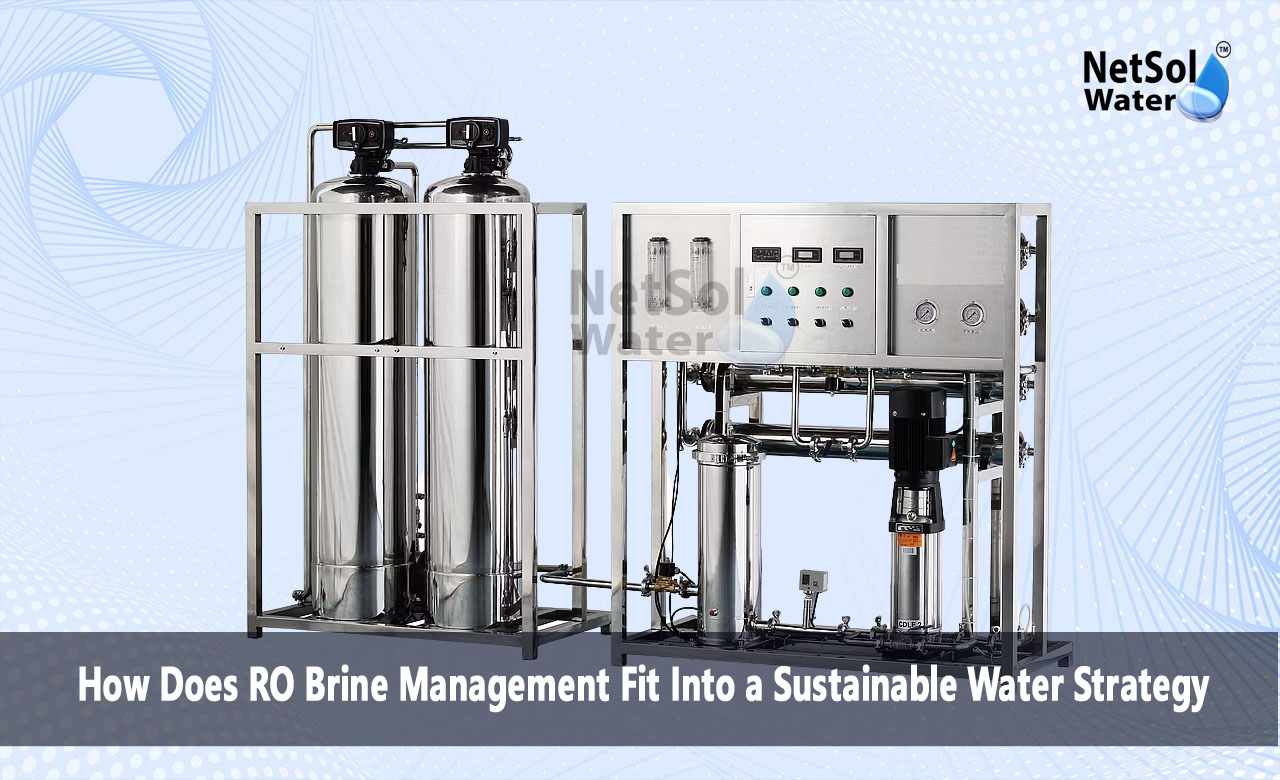How Does RO Brine Management Fit Into a Sustainable Water Strategy?
With industries and cities looking to implement greener approaches, sustainable water utilization is now a top priority. RO plants are essential in water treatment, but with the added cost of producing brine or reject water—a concentrated flow of dissolved salts and pollutants. Proper management of this byproduct is essential to provide environmental protection and conserve resources. This is where RO brine management fits into a sustainable water strategy and emerges as a key component of long-term water planning.
What Is RO Brine?
RO brine is the concentrated waste stream remaining after clean water is being separated during the reverse osmosis process. As the treated water proceeds to be reused or discharged, the brine has high salt, mineral, and possibly toxic pollutant contents. Unless disposed of with proper care, this brine can harm soil, groundwater, or surface water ecosystems.
Why Brine Management Matters in Sustainability
When industries refer to sustainability, it is not merely about saving freshwater. It's also about dealing with waste sensibly. RO brine management fits into a sustainable water strategy because it has direct implications for water reuse, environmental conservation, as well as regulatory compliance.
Successful brine management implies:
· Decreasing pollution threats
· Saving energy and resources
· Facilitating Zero Liquid Discharge (ZLD) systems
· Promoting circular water consumption in industry and urban areas
Common Methods of RO Brine Management
To see where RO brine management fits into a sustainable water strategy, let's examine the top methods of today:
Dilution and Discharge (Limited Application)
Brine is sometimes diluted and discharged into municipal sewer systems or natural watercourses. Though it can be cheap, it is not sustainable because it poses a threat to long-term environmental damage. It only comes under strict regulation.
Evaporation Ponds
These ponds allow the water component of brine to evaporate in its natural way, depositing solid salts for disposal. The technique is appropriate for arid regions with extensive open spaces but could be time-consuming and require much land.
Brine Concentrators and Crystallizers
For more mature sustainable approaches, industries implement brine concentrators in sequence with crystallizers. These units remove additional water from the brine, minimizing waste volume and recovering reusable salts or minerals. This assists in ZLD and minimizes environmental impact.
Reuse in Secondary Applications
Certain companies recycle brine in applications such as cooling, washing, or even horticulture (for salt plants), based on the chemical composition. This is entirely in line with how RO brine management is part of an environmentally friendly water strategy, as it makes waste a valuable asset.
Ion Exchange or Electrodialysis
Innovative techniques like ion exchange or electrodialysis are being developed to recover useful ions from brine and reduce disposal loads. Though still evolving, they represent the future of low-waste water systems.
Brine Management and ZLD
One of the most clear-cut instances of how RO brine management is part of a sustainable water plan is its contribution to ZLD aspirations. ZLD implies that no liquid waste is discharged off-site. Brine is either recycled or reduced to solid waste by evaporation or enhanced treatment.
Effective brine management allows industries to:
· Meet environmental regulations
· Minimize freshwater withdrawal
· Increase overall water reuse effectiveness
Environmental and Regulatory Implications
Governments and pollution boards are increasingly interested in brine discharge. Uncontrolled brine can increase salinity in the soil, kill aquatic life, and pollute water bodies. Therefore, regulators now mandate brine management plans for huge RO plants.
Where RO brine management fits into a sustainable water strategy, it makes sure these regulatory requirements are fulfilled while protecting local ecosystems.
Role of Innovation in Sustainable Brine Management
The way to the future of brine management is through innovation. Start-ups and veteran water tech firms are developing new, intelligent brine recovery systems, solar-powered evaporators, and AI-driven discharge monitoring equipment that is more affordable, scalable, and sustainable.
Automation also assists in monitoring and minimizing brine volumes through fault detection early in RO plants, enhancing water recovery efficiency.
Industries Pioneering the Way
Industries from industries such as textiles, pharmaceuticals, electronics, and food processing are currently embracing green brine management technologies. These types of industries normally work with large RO plants and high water consumption, and therefore brine handling is a main aspect of their environment duty programs.
Conclusion
RO brine management fits into a sustainable water strategy with closing the loop in water utilization, minimizing waste, and safeguarding the environment. Instead of looking at brine as waste, companies and cities can regard it as a worthy element of circular water management. Through an optimal combination of technology and reuse approaches, brine management is no longer merely a requirement but a wise move toward sustainability.
Do you need an advice or assistance on selecting the best water and waste water treatment unit? We have solutions for all your problems!
Let us know your problem, our experts will make sure that it goes away.
For an assistance or related query,
Call on +91-9650608473 Or write us at enquiry@netsolwater.com



